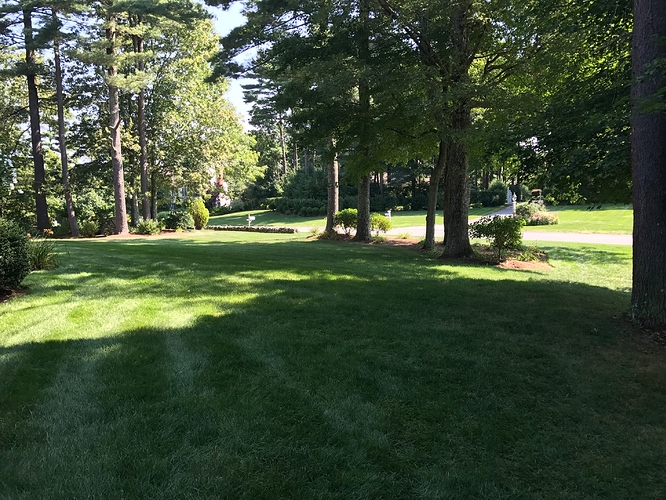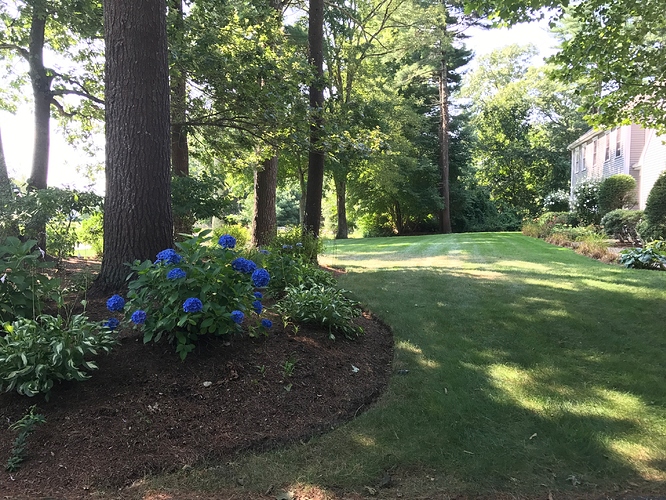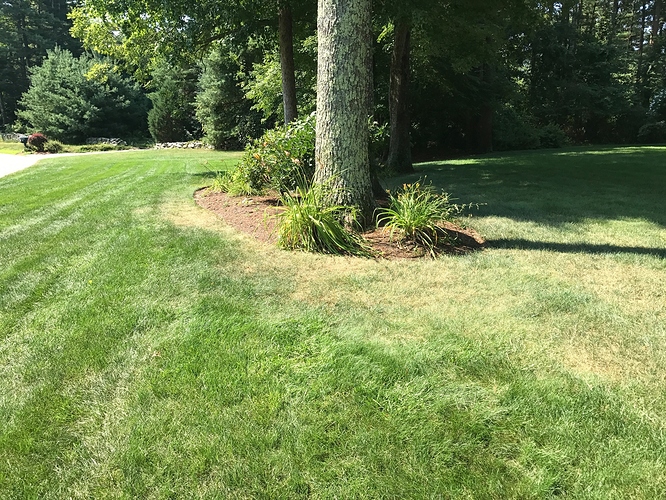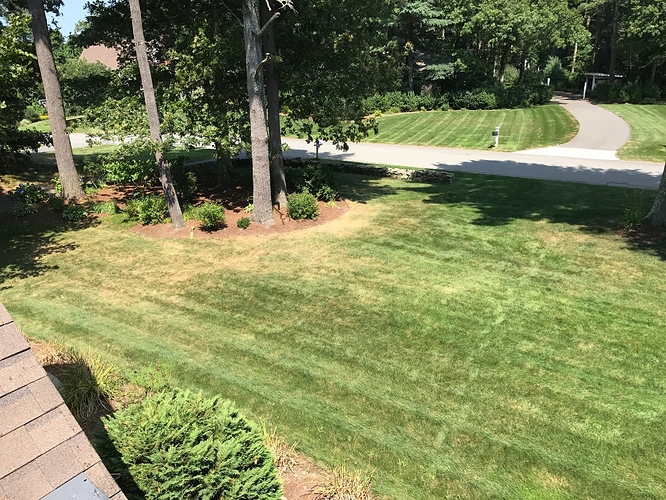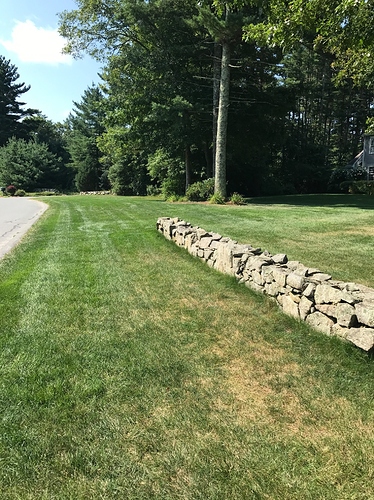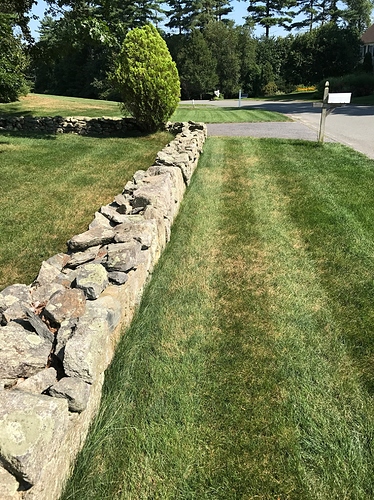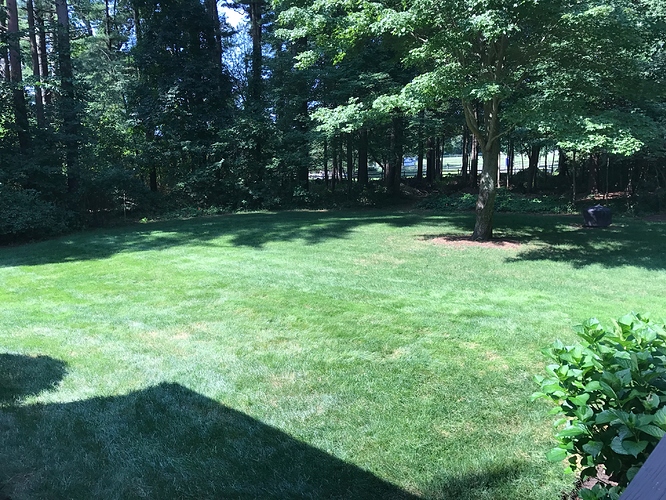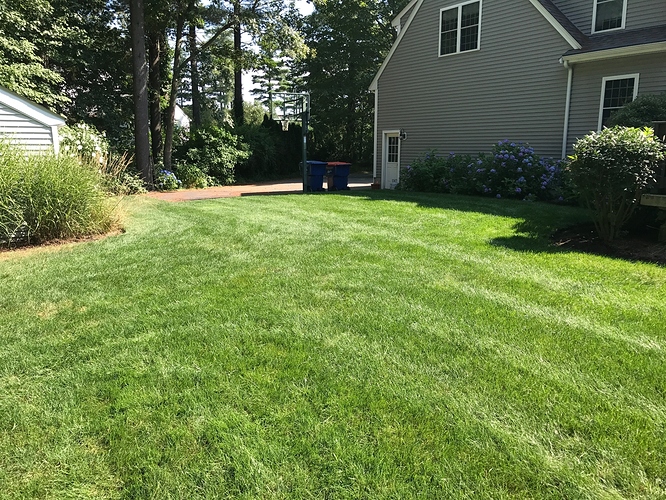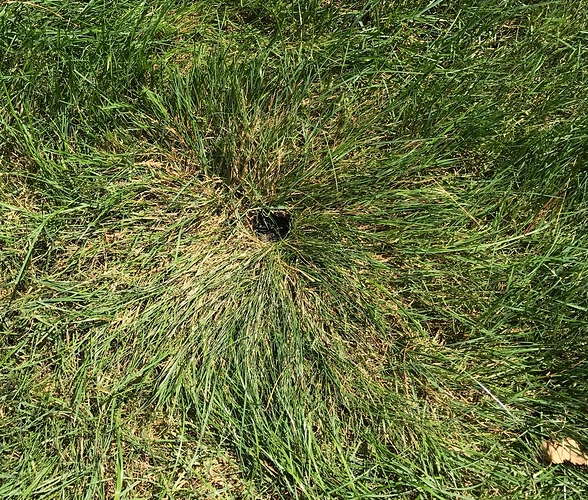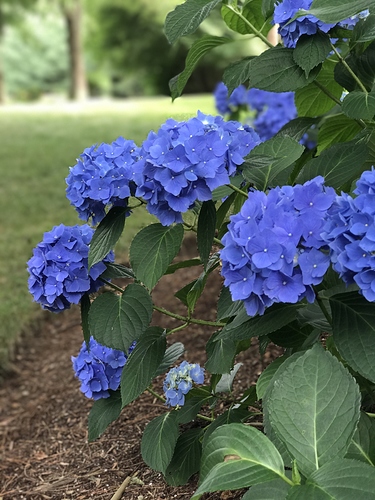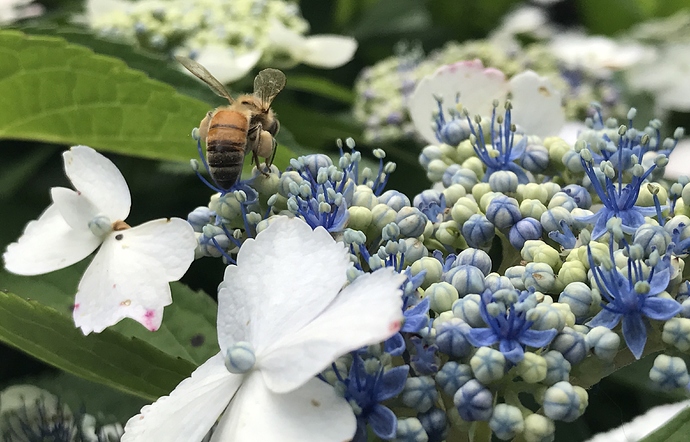I replaced our Hunter Pro-C with the Rachio v2 the first week of May so here we are about three months later and I thought I’d check in. There are seven zones of six Hunter I-20 rotors throughout the yard.
First of all…
Rahh-key-yo
Ratch-ee-yo
Ra-key-yo
Rocky-yo
…how the hell do you pronounce this thing?
We moved into this home June of last year so I don’t have a ton of history on the lawn’s prior performance. So far this summer feels cooler and more rainy than last year which had a lot of hot and dry spells. The yard seemed a bit ignored when we moved in so we spent time fertilizing, aerating, over-seeding, weed prevention, etc… just trying to give it some love and a chance to fight back.
I’d summarize 3 months of Rachio as, “It isn’t dead yet! Let’s keep going!” 
The Hunter Pro-C’s schedule was, ignoring the rain sensor for now, to always run for 20 minutes per zone every morning so we had about 2-1/3 hours of watering every morning. I don’t have a run timer on our well pump (I’d like to add one) but for the sake of simplicity say it had to run 100% of the time the irrigation was going. That would be >16 hours of well pump run time per week just to water the yard. I planned to count the # of watering days with Rachio since I installed it, but it appears I cannot see that data on the web page (Or I’m blind to where it is.). Generally though I have seen it go weeks with no watering due to rain and/or allowed depletion not going down quickly, or daily watering of anywhere from 3-7 zones depending on the allowed depletion per zone. Without a doubt I’m putting less wear and tear on my well system which I like.
I installed the Rachio with daily flex and did change some of the entry-level values such as soil type, slope, and amount of sunlight. Otherwise I’ve left it alone and haven’t gotten back to do custom nozzles after cup testing or check on other things like root depth. For basically an out of the box setup I think it has done well. If life settles down enough to go back and tweak some more settings maybe it’ll dial in even further.
Below are some images and commentary from around the yard. We’re about 45 miles south of Boston, MA in USDA plant hardiness zone 6b. It’s crazy how lighting changes the color of the grass from photo to photo. I’ve been cutting the grass at 3.75" with the hope it will shade the ground a little more on hot days so it may look a bit shaggy.
Front yard. Overall pretty good, a few brown patches here and there though mostly surrounding the beds where pine trees are. Our septic system is underground nearly in the middle of the photo.
Also front yard, you can see the brown I’m getting around beds as well as some smaller brown patches towards the left side of the pic mixed in. Thoughts on improvement methods? Water coverage isn’t an issue in those spots from what I remember, but I can double check.
Looking back the other way.
Same browness issue near a different bed by pine trees.
More brownness around a bed as well as other areas I know are getting good water coverage.
Overhead shot of a not-so-great area.
Up by the road both sides of the rock wall have some challenged areas. That area gets great water coverage, not sure what I should be doing for it.
The other side of the driveway is also ours, but amusingly it is the neighbor’s irrigation heads that water it. Some more dead/thin areas up the slope by the tree in the very upper left corner of the shot. I may put some work into that slope area this fall.
Backyard is good overall, a few yellowed spots here and there I wish I could improve.
Looking closely you can see some yellow patches.
The area below is the one I’m most pleased with. Last year even during heat waves, the ground was soggy and muddy. To the point where I thought maybe a line was broken under ground as just stepping in the area would dampen the bottom of your shoes. Grass was also sparse and easily damaged when turning the mower anywhere in the area. The way the zones are laid out the poor area has a lot of overlap between multiple rotor heads on two different zones. Looking at the rotor coverage I think part of this area was getting ~400% as much water as areas without overlap. It would likely take entirely redoing the zones configuration to really fix it properly so I’ve kind of just lived with it and reduced rotor arcs a bit where possible. However, this year with Rachio watering much less the ground is no longer soggy and the over-seed from last year seemed to really root in nicely. It still isn’t quite perfect in person, but it is miles better than what it was before.
We’ll see how the rest of summer goes! 

